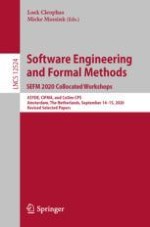2021 | OriginalPaper | Buchkapitel
Symbolic and Statistical Theories of Cognition: Towards Integrated Artificial Intelligence
verfasst von : Yoshihiro Maruyama
Erschienen in: Software Engineering and Formal Methods. SEFM 2020 Collocated Workshops
Aktivieren Sie unsere intelligente Suche, um passende Fachinhalte oder Patente zu finden.
Wählen Sie Textabschnitte aus um mit Künstlicher Intelligenz passenden Patente zu finden. powered by
Markieren Sie Textabschnitte, um KI-gestützt weitere passende Inhalte zu finden. powered by
